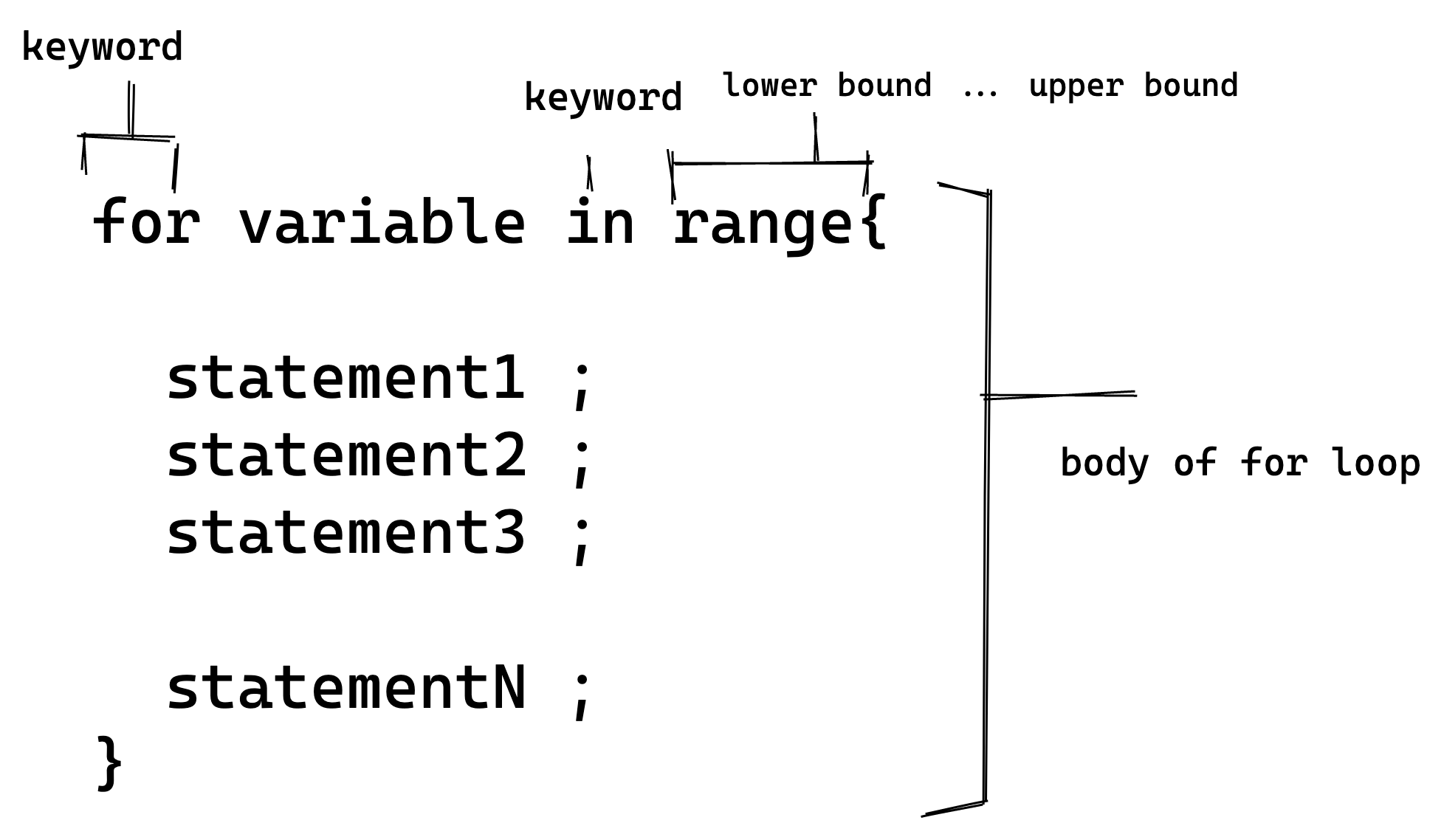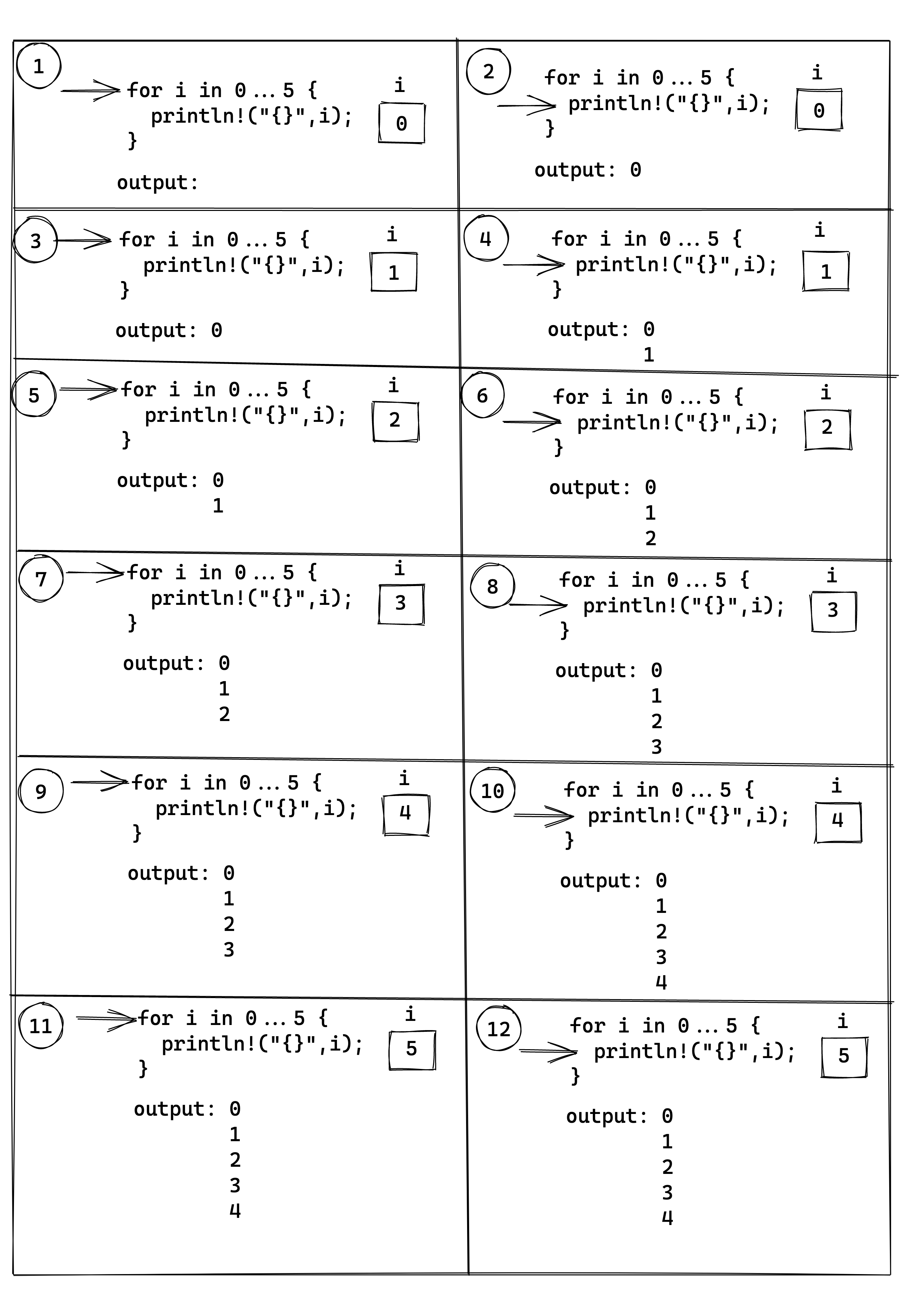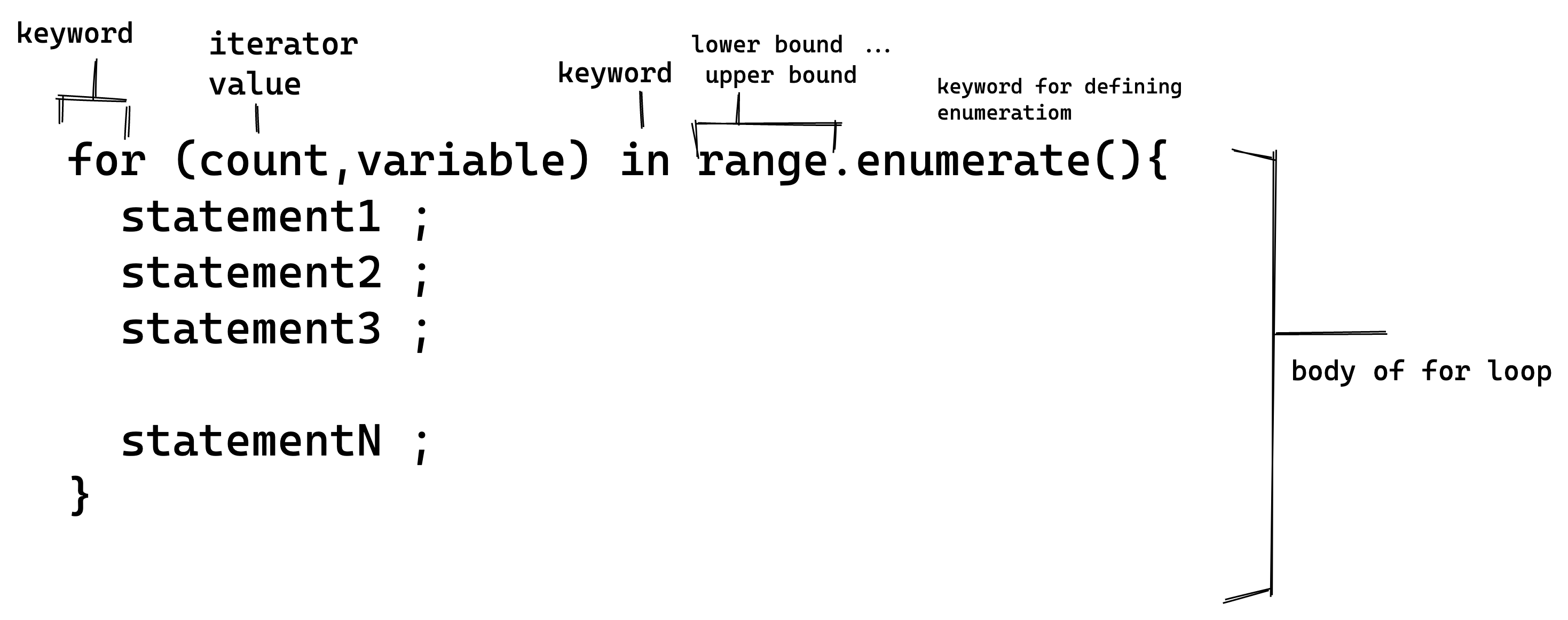On this page
article
Definite Loop - For Loop
Definite Loop - For Loop
What Is a for Loop?
A for loop is a definite loop, meaning, the number of iterations is defined.

Syntax
The for loop is followed by a variable that iterates over a list of values.
The general syntax is :

Example
The following example uses a for loop that prints 5 numbers.
fn main() {
//define a for loop
for i in 0..5 {
println!("{}", i);
}
}
output
0
1
2
3
4
Explanation
for loop definition
- On line 3 a for loop is defined.
- Variable i is an iterator variable that iterates over the range with the lower bound as 0 and the upper bound as 5. From here the body of the loop starts.
- On line 3 a for loop is defined.
for loop body
- The body of the for loop is defined from line 3 to line 5
- In each iteration:
- On line 4, the value of the variable i is printed.
- The value of the variable i is incremented by 1.
The iterator variable i traverses over the range until the upper bound is reached.
Note: The lower bound is inclusive and the upper bound is exclusive in the range
The following illustration explains this concept:

Enumerate
To count how many times the loop has already executed, use the .enumerate() function.
- Syntax The general syntax is :

- Example
The example below prints the frequency of iterations and the value of variable.
fn main() {
for (count, variable) in (7..10).enumerate() {
println!("count = {}, variable = {}", count, variable);
}
}
output
count = 0, variable = 7
count = 1, variable = 8
count = 2, variable = 9
Explanation
enumerated for loop definition
- On line 2 an enumerate for loop is defined.
- The variable variable iterates over the range with the lower bound as 7 and the upper bound as 10 and a variable count which shows how many times the loop is iterated. From here the body of the loop starts.
enumerated for loop body
- On line 3, the value of count and variable is printed and then incremented by 1.
Quiz
---
primaryColor: steelblue
secondaryColor: '#e8e8e8'
textColor: black
shuffleQuestions: false
shuffleAnswers: true
locale: en
---
# What is the output of the following code?
```
fn main() {
for i in 0..5{
if i % 4 == 0 {
print!("{}", i);
}
}
}
```
- [ ] 04
- [ ] 01234
# What is the output of the following code?
```
fn main() {
for (count, variable) in (7..10).enumerate() {
if count * 2 == 4{
println!("count = {}, variable = {}", count, variable);
}
}
}
```
- [ ]
count = 0, variable = 7
count = 1, variable = 8
count = 2, variable = 9
- [ ] count = 2, variable = 9
Last updated 25 Jan 2024, 05:11 +0530 .